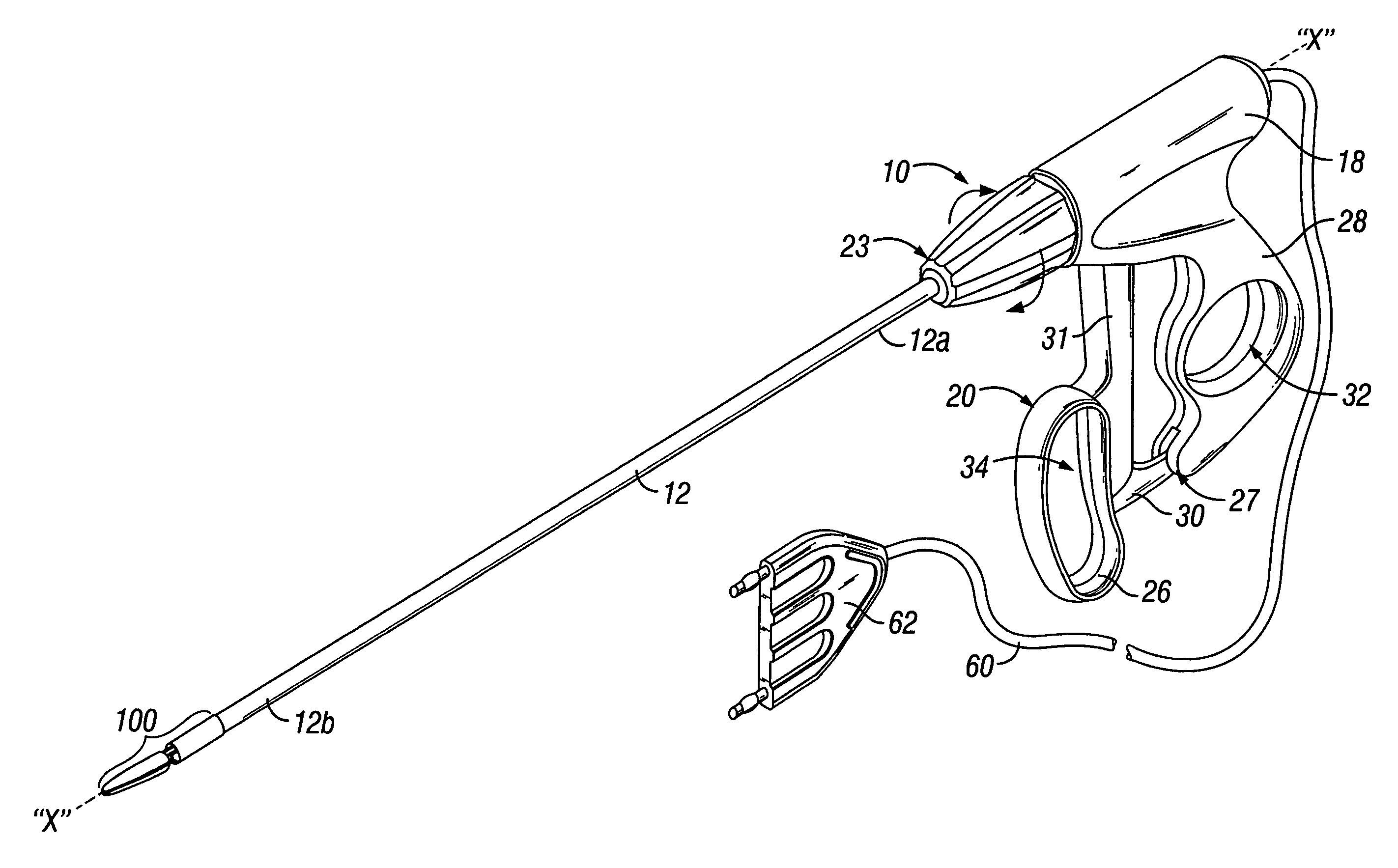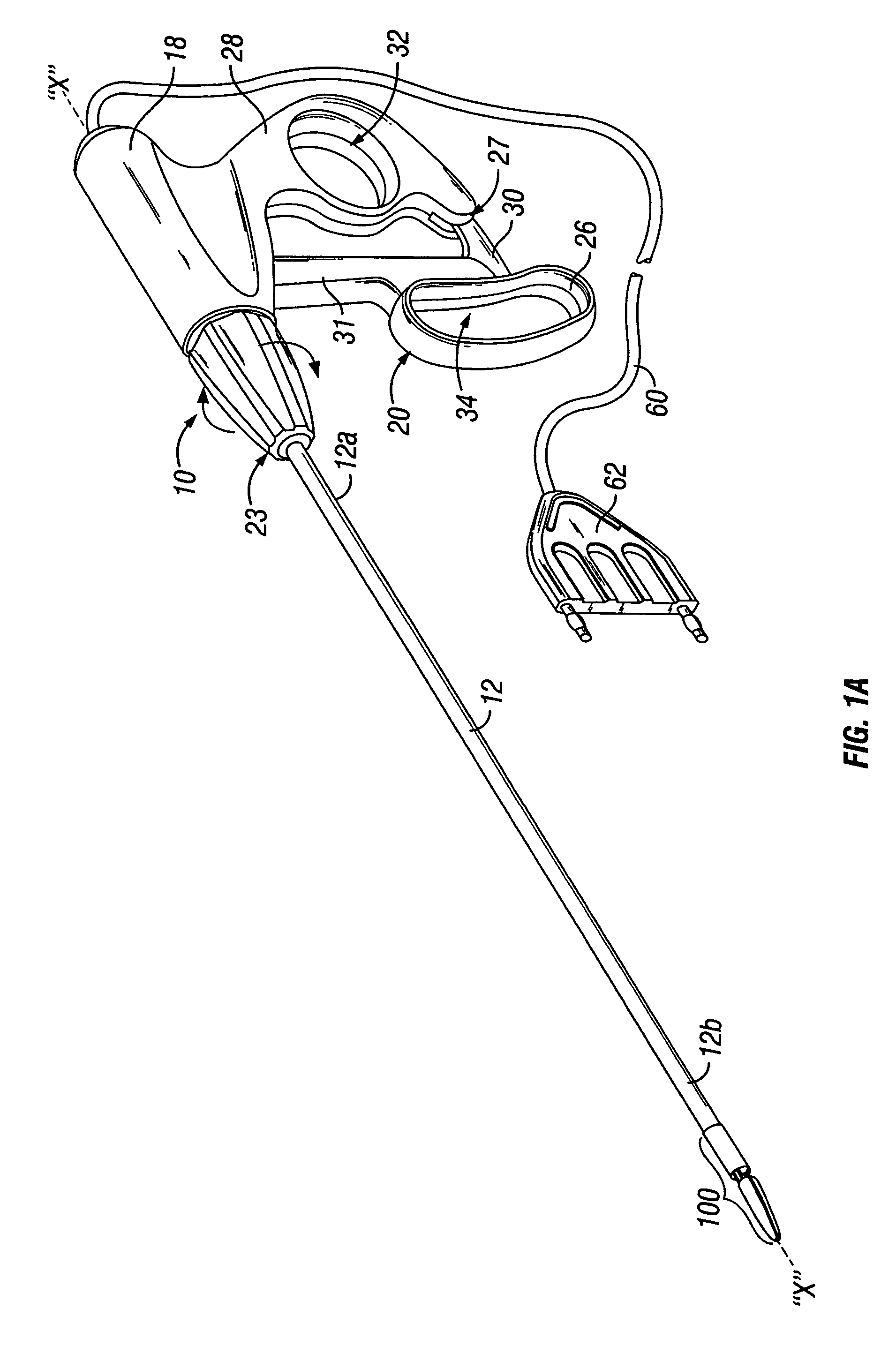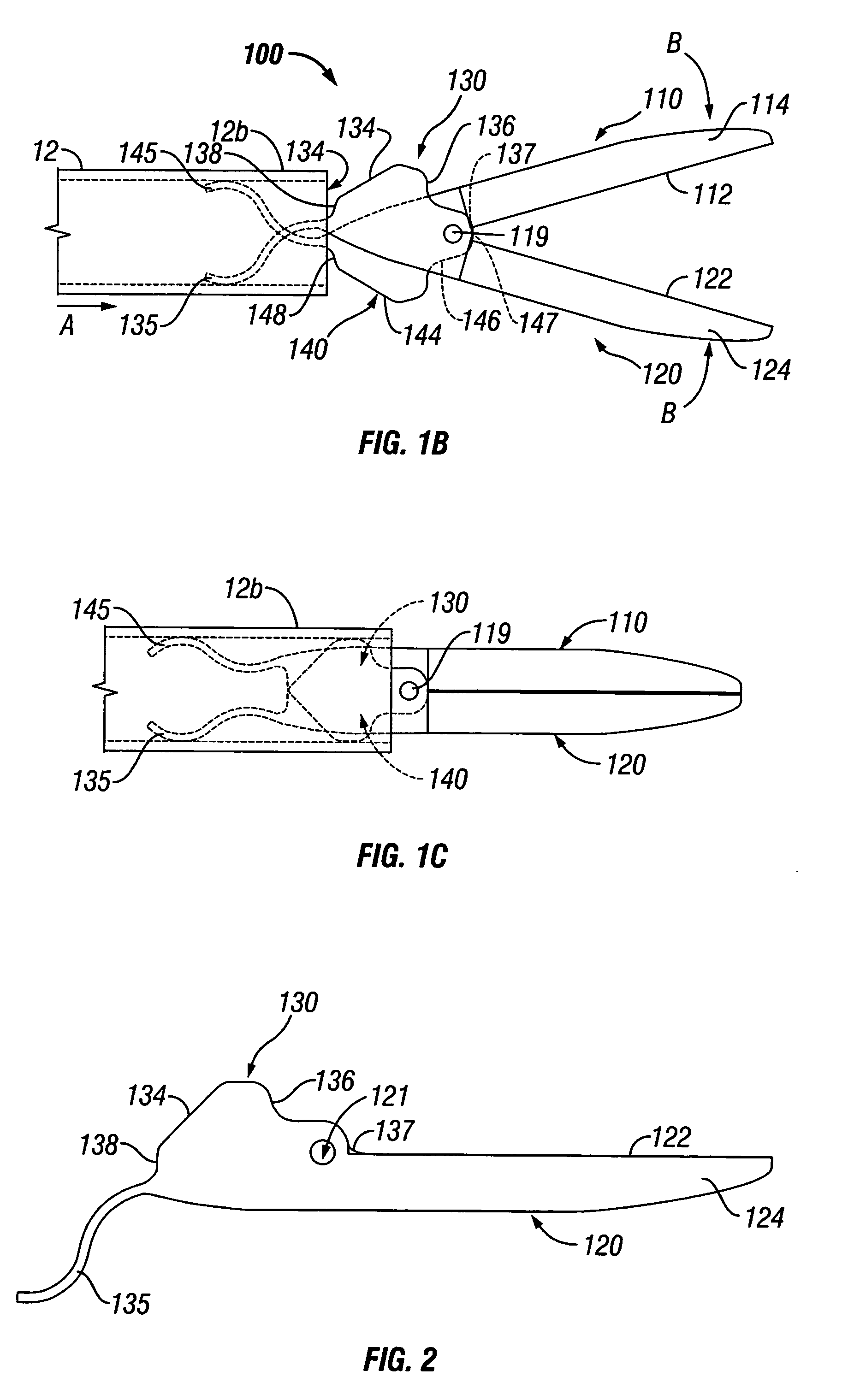Forceps with spring loaded end effector assembly
a technology of end effectors and forceps, which is applied in the field of endoscopic surgical instruments, can solve the problems of not being able to safely coagulate arteries, surgeons can have difficulty suturing vessels or performing other traditional methods of controlling bleeding, and abandoning the benefits of laparoscopy, etc., and achieves the effect of sealing tissue upon application of electrosurgical energy
- Summary
- Abstract
- Description
- Claims
- Application Information
AI Technical Summary
Benefits of technology
Problems solved by technology
Method used
Image
Examples
Embodiment Construction
[0036]Detailed embodiments of the presently disclosed instruments, devices and systems will now be described in detail with reference to the drawing figures wherein like reference numerals identify similar or identical elements. In the drawings and in the description which follows, the term “proximal”, as is traditional, will refer to the end of the instrument, device and / or system which is closest to the operator while the term “distal” will refer to the end of the instrument, device and / or system which is furthest from the operator.
[0037]Referring to FIG. 1A, an endoscopic instrument according to one embodiment of the present disclosure is designated generally as reference numeral 10. Endoscopic instrument 10 includes an elongated shaft 12 which is mechanically coupled to a handle assembly 18 at a proximal end 12a thereof and a distal end 12b which is mechanically coupled to an end effector assembly 100. Elongated shaft 12 is preferably hollow and includes internal electrical conn...
PUM
 Login to View More
Login to View More Abstract
Description
Claims
Application Information
 Login to View More
Login to View More - R&D
- Intellectual Property
- Life Sciences
- Materials
- Tech Scout
- Unparalleled Data Quality
- Higher Quality Content
- 60% Fewer Hallucinations
Browse by: Latest US Patents, China's latest patents, Technical Efficacy Thesaurus, Application Domain, Technology Topic, Popular Technical Reports.
© 2025 PatSnap. All rights reserved.Legal|Privacy policy|Modern Slavery Act Transparency Statement|Sitemap|About US| Contact US: help@patsnap.com



